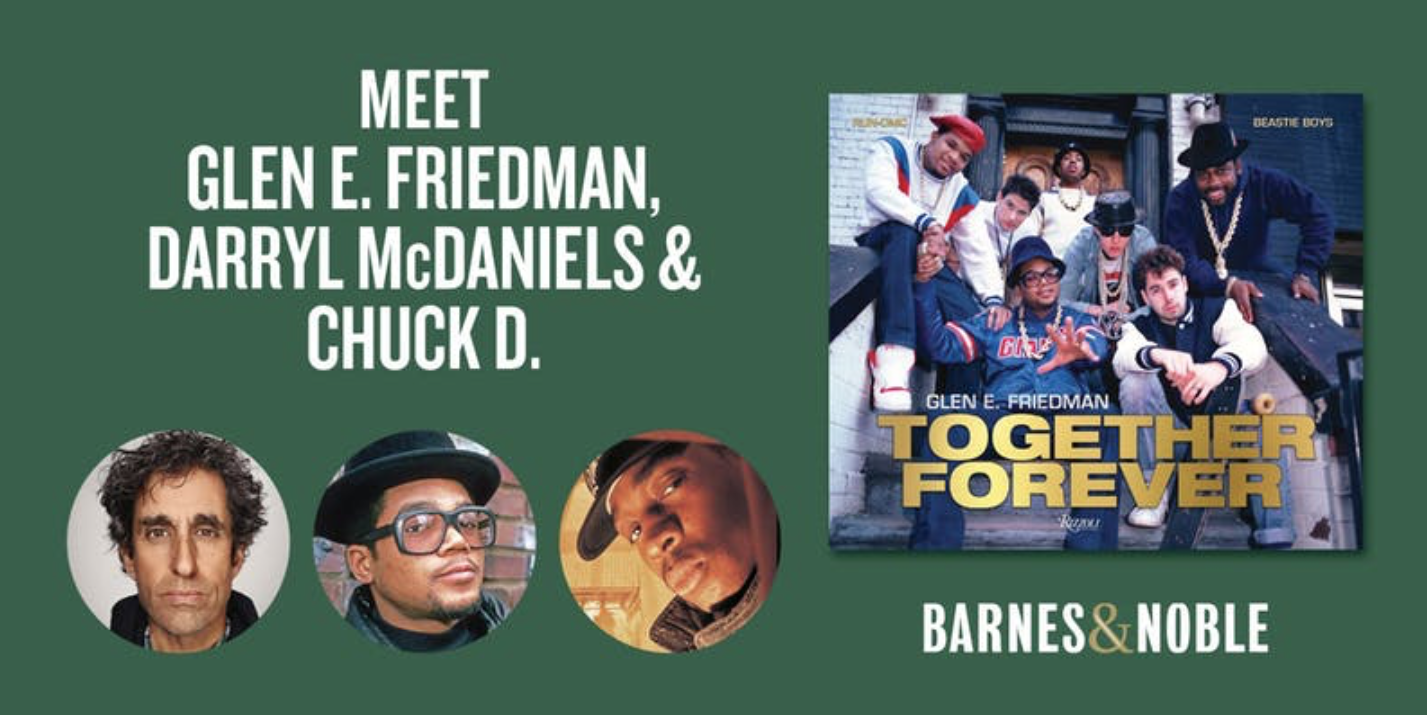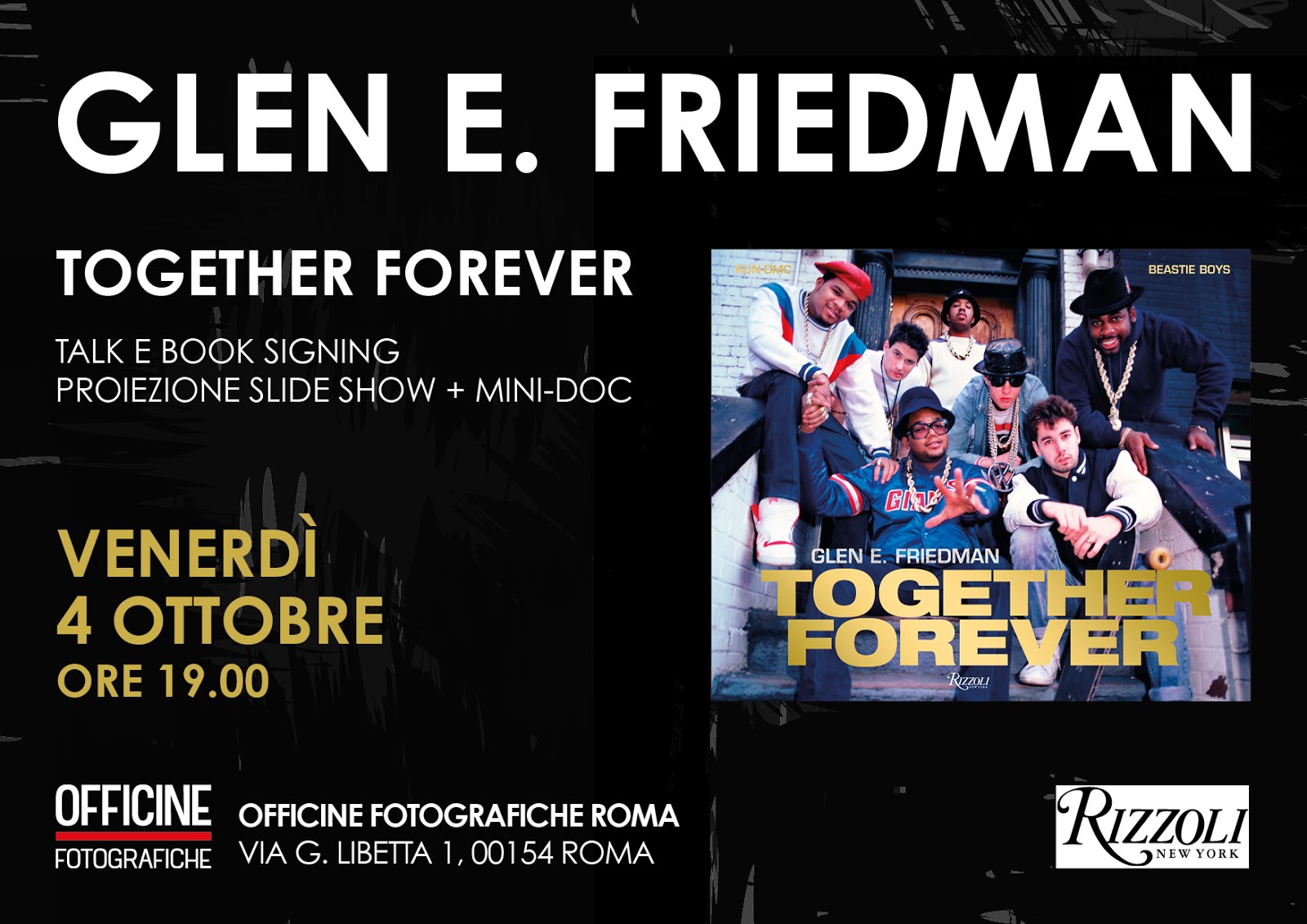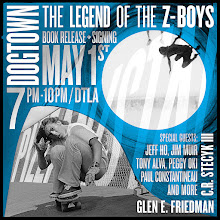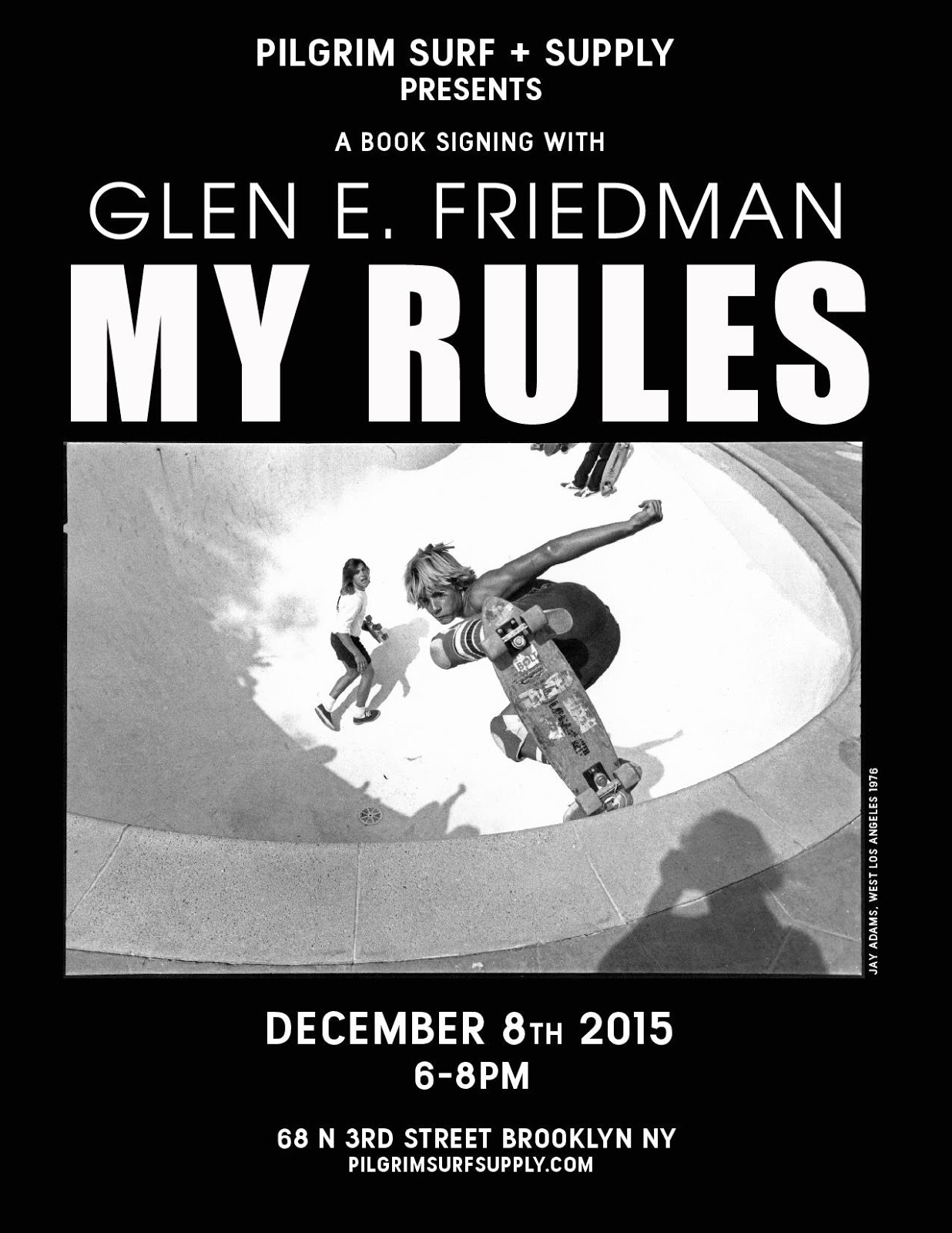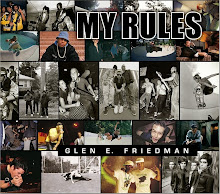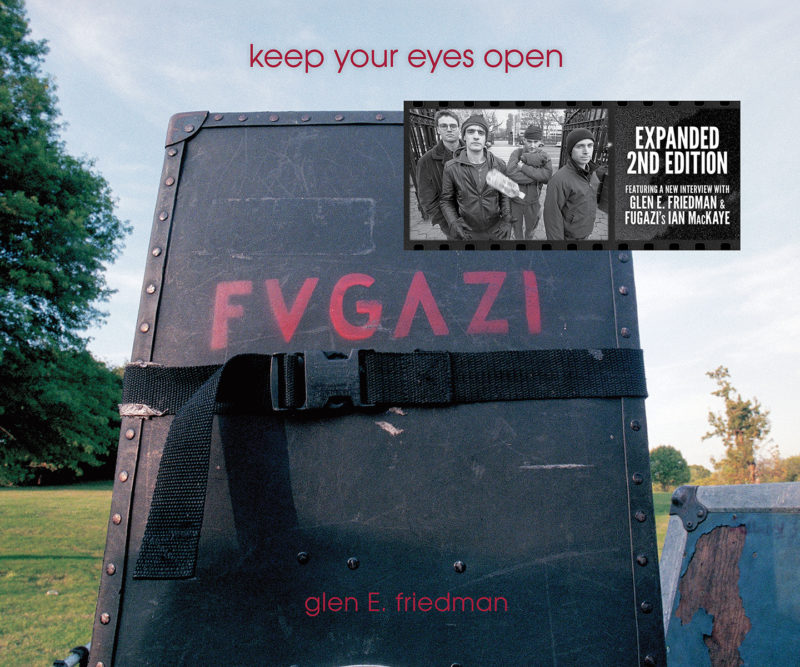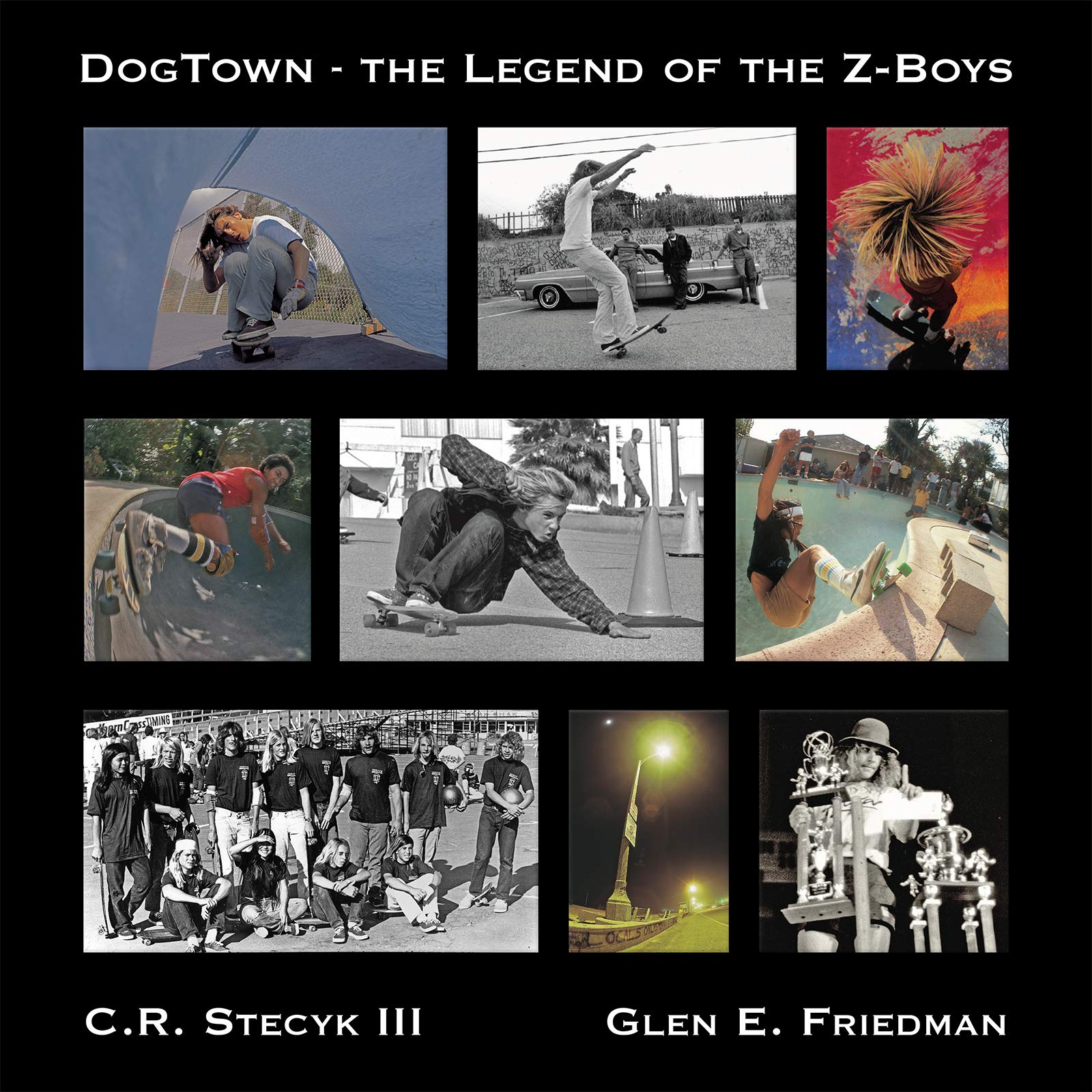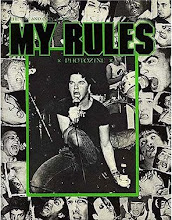As ordinary Americans reel from the Great Recession, these gluttonous all-stars continue to claw in absurd amounts of money.from AlterNet
Has picking a year’s greediest "top ten" ever been easier? We don't think so. We could, this year, fill an entire top ten just with bankers from Goldman Sachs -- or JPMorgan Chase or any of a number of other Wall Street giants. All sport executive suites packed with power suits who fanned the flames that melted down the global economy, then helped themselves, after gobbling down billions in bailouts, to paydays worth mega millions -- at a time when, in over half our states, over a quarter of America’s kids are living off food stamps.
Now that’s greed. But that’s also not the whole picture. The Great Recession’s greedy don’t just sit on Wall Street. They occupy perches of power throughout the reeling U.S. economy. So we’ve tried, in this our latest annual ranking of avarice, to survey that bigger picture.
Where does all this greed come from? We humans have always, of course, had greed among us. But levels of greed vary enormously from one historical epoch to another -- and from one society to another.
What determines which societies see the most greed and grasping? In a word: inequality. The more wealth concentrates, the more greed grows. The United States remains the most unequal nation in the developed world. Next year, we suspect, will bring us still another bumper crop of greedy.Go here to AlterNet10: Richard Anderson
to read about all of them:
9: George David/Marie Douglas-David
8: Steve Wynn
7: Robert Rubin
6: Andrew Hall
5: John Chambers
4: Rupert Murdoch
3: Mark Hurd
2: Richard Scott
1: Larry Ellison
Larry Ellison appeared on our "greediest" list last year. He may appear every year. No one may better personify, personally and professionally, the self-absorption, arrogance, and insensitivity that separates the merely greedy from the greediest.
In 2008, Ellison, the CEO of Oracle business software, contested the $166.3 million tax appraisal on his Northern California estate. The assessment appeals panel gave him a $3 million tax refund in a ruling that will cost the local school system an annual $250,000, the cost of hiring and supplying three teachers.
Ellison, the holder of a $27 billion fortune, spent a good bit of 2009 sparing no expense to build a yacht speedy enough to win next year’s America’s Cup, the world’s top sailing race. His new racing yacht has a $10-million mast "18-stories tall and sails large enough to cover a baseball infield." Some 30 designers and scientists spent 130,000 hours putting the vessel together.
For more casual water fun, Ellison takes to the seas on his 453-foot mega yacht, the Rising Sun, a boat he co-owns with Hollywood mogul David Geffen. This five-story little ship boasts 82 rooms and a basketball court that doubles as a helicopter pad. The construction cost in 2004: $200 million.
On the business side, Ellison did his best in 2009 to top the $557 million he took home as Oracle’s CEO in 2008. His magic formula: Ellison’s a serial merger. He buys companies, takes their customers, and fires their workers. His top 2009 gobble-up: Silicon Valley’s Sun Microsystems.
The Sun merger, analysts believe, will almost certainly end up eliminating more jobs than the 5,000 positions lost when Oracle bought out rival PeopleSoft.
And did we mention the dividends? Oracle this past spring announced plans to pay out its first dividend. The announcement, CNBC estimated, meant a $57.5 million quarterly check for Ellison in May and another $230 million in dividend checks over the next 12 months.
In 2009, the old Silicon Valley joke still rang true: "What's the difference between God and Larry Ellison? Answer: God doesn't think he's Larry Ellison."
Thursday, December 31, 2009
10 Greediest People of 2009
Wednesday, December 30, 2009
New Biomass Plant for the UK Looks Like a Giant Green Volcano
 The United Kingdom is splattered with fossil fuel based power plants and concrete cooling towers which are major carbon producers as well as eyesores. Luckily, plans for a new biomass power plant covered in native grasses in the UK have just been released and they will complement the surrounding ecology as well as decrease carbon emissions by 80% compared to coal or gas fired power stations. Designed by Thomas Heatherwick, a London-based firm, the 49.3 MW power plant located on the banks of the River Tees will be a man-made mountain covered in plants and will certainly be a welcome replacement to the older, pollution-spewing plants around the country.
The United Kingdom is splattered with fossil fuel based power plants and concrete cooling towers which are major carbon producers as well as eyesores. Luckily, plans for a new biomass power plant covered in native grasses in the UK have just been released and they will complement the surrounding ecology as well as decrease carbon emissions by 80% compared to coal or gas fired power stations. Designed by Thomas Heatherwick, a London-based firm, the 49.3 MW power plant located on the banks of the River Tees will be a man-made mountain covered in plants and will certainly be a welcome replacement to the older, pollution-spewing plants around the country. Powered by palm kernel shells, which are the byproducts of palm oil plantations, the plant will reduce carbon emissions by 80% compared to traditional coal or gas fired stations. The palm kernel shells, considered a renewable fuel, will be delivered directly by boat, eliminating the need to haul the fuel by truck. The 49 MW plant will provide enough power for 50,000 homes, providing cleaner, lower carbon baseload power for the region. Inside, the power plant will also contain offices, a visitors’ center and an education resource center for renewable energy.
Powered by palm kernel shells, which are the byproducts of palm oil plantations, the plant will reduce carbon emissions by 80% compared to traditional coal or gas fired stations. The palm kernel shells, considered a renewable fuel, will be delivered directly by boat, eliminating the need to haul the fuel by truck. The 49 MW plant will provide enough power for 50,000 homes, providing cleaner, lower carbon baseload power for the region. Inside, the power plant will also contain offices, a visitors’ center and an education resource center for renewable energy.Built on a brownfield site next to the river, the BEI-Teeside plant will bring much needed investment to the area, as well as renew a currently barren plot of land. While similar plants are certainly not free of carbon emissions, this biomass plant is a step in the right direction and is one of the best looking power plants we’ve ever seen.
+ Heatherwick Studio
(from inhabit Via Dezeen)
Labels:
Design,
energy,
Environment
Tuesday, December 29, 2009
One Laptop Per One Child - the next generation

Yves Béhar of San Francisco design studio fuseproject has unveiled plans for the third generation of the One Laptop Per Child project.
The latest version of the affordable computer – which will retail for an estimated $75 and which is called XO-3 – is a table-format device with a semi-flexible plastic screen.
The XO-3 is expected to ship in 2012.
See previous stories about the One Laptop Per Child project on Dezeen:
XOXO laptop (May 2008)
Yves Béhar wins Design of the Year award for One Laptop Per Child Project (March 2008)
One Laptop Per Child Charity Auction (December 2007)
Here’s some info from fuseproject:
Two years ago, around this time of year the One Laptop Per Child XO laptop was launched with Nicholas Negroponte. Now more than one million laptops have been distributed to children around the world to help further the mission of providing education and access to information for all… like in Uruguay where every public school child between 6 and 12 years old has one.
While the distribution of OLPC XO continues, today we and OLPC are presenting the XO-3 (http://www.fuseproject.com/#blogEntry79). Our new design features an all plastic tablet screen which is semi-flexible and extremely durable (compared to current glass screens which crack upon impact), and just like the original XO, the display can be optimized in both transmissive and reflective modes for indoor and outdoor lighting conditions. The XO-3 supports many use scenarios to fulfill kids’ learning needs: from horizontal book mode to portrait reading mode, to multi-touch, so many hands can play and learn together on the same screen, to a full-touch keyboard and a back facing camera.
from DeZeen design magazine
Labels:
Design,
education,
technology
Monday, December 28, 2009
Incredible ‘Garbage City’ Rises Outside of Cairo
This unbelievable city piled high with trash is a real place called Garbage City, outside of Cairo in Egypt. It’s populated by a community of workers called Zabbaleen, who personally collect, sort, reuse, resell or otherwise repurpose Cairo’s waste. Recently several photographers have trained their cameras upon the city, and now we see what it would really be like to live in the aftermath of our own consumption.
So here we are, on our green design blog, talking about confonting the waste produced by modern consumptive habits, reduce, reuse, get a pop-top purse, etcetera, and suddenly this photo shows up. This oddly fascinating metropolis is actually a very efficient waste management system: food scraps are fed to livestock, what can be repaired is, and everything else is recycled, sold for scrap, or burned for fuel. The Zabbaleen live at poverty levels but live a long-held tradition of scavenging as skill. Not surprisignly, many photographers have become facinated with the community.
Bas Princen recently displayed a photo at the Netherlands Architecture Institute. Klavs Bo Christensen has a stunning collection of black and white images on Lightstalkers. Alexander Heilner documents a drearier day-to-day on Marketplace. At every angle, Garbage City feels like what the world would look like if someone grabbed it by the corner and shook it.
Cairo has attempted to replace this mass of independent workers with multinational waste management corporations, putting an already impoverished community at risk. To make matters worse, the government ordered a widespread slaughter of pigs earlier this year in an attempt to curtail the potential spread of swine flu. These are the same pigs to whom the Zabbaleen fed compotable waste. The result has reportedly been a trash-strewn Cairo. Which meant, at least in September, that many Egyptians might have felt a little like Zabbaleen.
(via We Make Money Not Art , via inhabitat)
Labels:
culture,
egypt,
Environment,
sociology
Sunday, December 27, 2009
Saturday, December 26, 2009
Norman Rockwell's Photo Realism

I had no idea, but it certainly makes sense.
Norman Rockwell was a 20th century American painter and illustrator. His works enjoy a broad popular appeal in the United States, where Rockwell is most famous for the cover illustrations of everyday life scenarios he created for The Saturday Evening Post magazine over more than four decades.(from Photo District News via Presurfer)
Norman Rockwell's rosy illustrations of small town American life looked so photographic because his method was to copy photographs that he conceived and meticulously directed, working with various photographers and using friends and neighbors as his models.
here's the full story on NPR. "Behind The Lens: Norman Rockwell's Photographers, A Mixed Picture"
Labels:
american,
Art,
classic,
Photography
Friday, December 25, 2009
The History Of The Chocolate Chip Cookie

The word 'cookie' is derived from the Dutch word 'koekje,' meaning 'small or little cake.' Apparently, the first historic record of cookies was describing their use as test cakes.
What happened was a small amount of cake batter was baked once in order to test the temperature of the oven. Then rather than waste the batter, it was baked again along with the larger cake, and it would often come out crispy.
The History Of The Chocolate Chip Cookie.
In 1930, a dietitian who owned a tourist lodge was cooking and baking for her guests. Unfortunately, she ran out of the baker’s chocolate she needed for the chocolate cookies that were on the menu. She hurriedly substituted a chocolate bar — cut up into tiny pieces — assuming they would melt. They didn’t — they just softened, instead.
And the chocolate chip cookie was born.
This history of chocolate chip cookies is still alive today, because that woman struck a deal with the manufacturer of the particular chocolate bar she’d used that day: he would print her recipe on his chocolate bar labels, and she would have a lifetime supply of them…
(from Bacon Babble via Presurfer)
Thursday, December 24, 2009
60 satellite images of Earth
(perhaps Santa's perspective tonight)
Webdesigner depot has 60 incredible satellite photos of Earth.
(from Boing Boing Via The Presurfer)
Looking at nature from different perspectives can create stunning compositions for your photographs. This couldn't be more true than when we look at our planet from outer space and appreciate the reality of its beauty from such an incredible and rarely seen perspective.Go here and check them out, and click on them to see really large with more info and great resolution.Dasht-e Kevir – The Dasht-e Kevir, or valley of desert, is the largest desert in Iran. It is a primarily uninhabited wasteland, composed of mud and salt marshes covered with crusts of salt that protect the meager moisture from completely evaporating.
Garden City, Kansas – Center pivot irrigation systems create red circles of healthy vegetation in this image of croplands near Garden City, Kansas.
Campeche – Named after the ancient Mayan Province of Kimpech, the state of Campeche comprises much of the western half of Mexico’s Yucatan Peninsula. Rivers in southern Campeche drain into the immense Terminos Lagoon, the entrance to which is protected by a long barrier island, Isla Del Carmen.
Coahuila, Mexico - This desolate landscape is part of the Sierra Madre Oriental mountain range, on the border between the Coahuila and Nuevo Leon provinces of Mexico.
Bogda Mountains - The Turpan Depression, nestled at the foot of China’s Bogda Mountains, is a strange mix of salt lakes and sand dunes, and is one of the few places in the world that lies below sea level.
The images in this compilation are from the Landsat 7 satellite and were created to introduce the general public to the Landsat Program. Various combinations of the eight Landsat 7 spectral bands were selected to create the vivid RGB composites.
(from Boing Boing Via The Presurfer)
Labels:
Earth,
Environment,
Photography
Wednesday, December 23, 2009
Dismembered Gingerbread
Perfect for the Bad-Ass, or Punk Rock, baker in your life.

Dismembered Gingerbread at Chow.com's winter 2009 Gift Guide. Only $12, sorry i didn't find this sooner for y'all.
(from The Presurfer)

Dismembered Gingerbread at Chow.com's winter 2009 Gift Guide. Only $12, sorry i didn't find this sooner for y'all.
(from The Presurfer)
Tuesday, December 22, 2009
THE DAMNED
know how incredible the 1st LP is

Another early British punk band you might not all know, but should, and even if you do, you may not have listened as recently as i have. Here are some favorite cuts from the debut album DAMNED DAMNED DAMNED:
Labels:
1977,
Music,
Punk,
the damned
Monday, December 21, 2009
NOAM CHOMSKY: “The Unipolar Moment and the Culture of Imperialism”
from Democracy Now
Noam Chomsky delivers the 5th Annual Edward Said Memorial Lecture: The Unipolar Moment and the Culture of Imperialism at Columbia University School for International Affairs.
Noam Chomsky delivers the 5th Annual Edward Said Memorial Lecture: The Unipolar Moment and the Culture of Imperialism at Columbia University School for International Affairs.
Labels:
culture,
imperialism,
Noam Chomsky,
Politics
Sunday, December 20, 2009
Apple Working on 3D 'Hyper-Reality' Displays
from MacRumors.com via Mac News Daily
Apple's patent applications always provide an interesting peek into what Apple researchers have been working on. In one of the more interesting patent applications we've discovered, Apple appears to be researching 3D displays in which the user will be able to look around an object.
In order to view a 3D object from various angles on your screen at present, you are required to use the mouse or keyboard to manipulate the object. This might simply involve clicking and dragging to pan or rotate an object. While functional, Apple considers this to be unintuitive and potentially frustrating to new users.
 Apple proposes that a display could change the perspective of the 3D objects based on the users' relative position. Said display would detect the user's position through any suitable approach (such as video, infrared, electromagnetic fields etc...). Video, of course, is the most likely possibility with a camera mounted at the top of the display itself, thus allowing the computer to determine the user's location and position. The user could then move their head left and right to look around a 3D object as shown in the example image above. Apple also suggests that it could also be applied to 2D objects like windows to provide some added depth to traditionally flat objects:
Apple proposes that a display could change the perspective of the 3D objects based on the users' relative position. Said display would detect the user's position through any suitable approach (such as video, infrared, electromagnetic fields etc...). Video, of course, is the most likely possibility with a camera mounted at the top of the display itself, thus allowing the computer to determine the user's location and position. The user could then move their head left and right to look around a 3D object as shown in the example image above. Apple also suggests that it could also be applied to 2D objects like windows to provide some added depth to traditionally flat objects:

In fact, Apple suggests that software could be so advanced as to incorporate elements of the user's environments into the scene on the display.
Apple's patent applications always provide an interesting peek into what Apple researchers have been working on. In one of the more interesting patent applications we've discovered, Apple appears to be researching 3D displays in which the user will be able to look around an object.
In order to view a 3D object from various angles on your screen at present, you are required to use the mouse or keyboard to manipulate the object. This might simply involve clicking and dragging to pan or rotate an object. While functional, Apple considers this to be unintuitive and potentially frustrating to new users.
 Apple proposes that a display could change the perspective of the 3D objects based on the users' relative position. Said display would detect the user's position through any suitable approach (such as video, infrared, electromagnetic fields etc...). Video, of course, is the most likely possibility with a camera mounted at the top of the display itself, thus allowing the computer to determine the user's location and position. The user could then move their head left and right to look around a 3D object as shown in the example image above. Apple also suggests that it could also be applied to 2D objects like windows to provide some added depth to traditionally flat objects:
Apple proposes that a display could change the perspective of the 3D objects based on the users' relative position. Said display would detect the user's position through any suitable approach (such as video, infrared, electromagnetic fields etc...). Video, of course, is the most likely possibility with a camera mounted at the top of the display itself, thus allowing the computer to determine the user's location and position. The user could then move their head left and right to look around a 3D object as shown in the example image above. Apple also suggests that it could also be applied to 2D objects like windows to provide some added depth to traditionally flat objects:
In fact, Apple suggests that software could be so advanced as to incorporate elements of the user's environments into the scene on the display.
For example, the electronic device may define visual properties of different surfaces of the displayed object (e.g., reflection and refraction characteristics), and apply the visual properties to the portions of the detected image mapped on each surface. Using this approach, surfaces with low reflectivity (e.g., plastic surfaces) may not reflect the environment, but may reflect light, while surfaces with high reflectivity (e.g., polished metal or chrome) may reflect both the environment (e.g., the user's face as detected by the camera) and light. To further enhance the user's experience, the detected environment may be reflected differently along curved surfaces of a displayed object (e.g., as if the user were actually moving around the displayed object and seeing his reflection based on his position and the portion of the object reflecting the image).Apple has been researching these sorts of novel display types for years. Back in 1995, they had even had a similar system built in the lab and referred to these displays as "Hyper Reality" displays. Apple, of course, is not the only company working on such technology. This YouTube video shows this system in action (thanks djellison) on a make-shift Wii system, demoed by Johnny Lee:
Labels:
Apple,
technology
Saturday, December 19, 2009
Auschwitz death camp sign stolen
The infamous Arbeit Macht Frei sign at the entrance to the Auschwitz Nazi death camp in Poland has been stolen.

Above is a photo of the gate i took when i visited a bit more than a year ago while i was in Krakow for my FYA Exhibition as part of Photomonth. Auschwitz is in Poland, about an hour or so from where i was staying. It was the second time i had visited a concentration camp. The first just outside of Berlin called Sachsenhausen. It was as heavy as it gets, the location, the buildings still standing, the ruins, and the documentation, as well as original artifacts on display were not only mind boggling, but really earth shattering revelations, it's not like you didn't know, but seeing these things first hand is REALLY a life changing experience.
from the BBC:
Auschwitz's sign of death and defiance (history)
Cash crisis threat to Auschwitz (Narrated slide show+more)

Above is a photo of the gate i took when i visited a bit more than a year ago while i was in Krakow for my FYA Exhibition as part of Photomonth. Auschwitz is in Poland, about an hour or so from where i was staying. It was the second time i had visited a concentration camp. The first just outside of Berlin called Sachsenhausen. It was as heavy as it gets, the location, the buildings still standing, the ruins, and the documentation, as well as original artifacts on display were not only mind boggling, but really earth shattering revelations, it's not like you didn't know, but seeing these things first hand is REALLY a life changing experience.
from the BBC:
The wrought iron sign, whose words mean "Work Sets You Free", was unscrewed and pulled down from its position above the gate in the early hours of Friday. Polish authorities denounced the theft, while Israel's Holocaust museum branded it an "act of war". More than a million people - 90% of them Jews - were murdered by the Nazis at Auschwitz during World War II. Investigators say at least two people would have been needed to steal the five-metre-long (16ft), 40kg (90lb) sign. The theft occurred between 0330 and 0500 local time on Friday, police spokeswoman Katarzyna Padlo told AP news agency.some more interesting articles from the BBC about Auschwitz below:
Jarek Mensfelt, from the Auschwitz-Birkenau Museum, told the BBC: "It is more than just stealing something. It is a desecration."Somebody who did this must have been a person who had a knowledge of our security system because all the area is closed at night and patrolled and there is a system of cameras," he added. "This was not an incident - this was a deliberate and organised action." Avner Shalev, director of Israel's Yad Vashem Holocaust Memorial, said the theft "constitutes a true declaration of war". He added: "We don't know the identity of the perpetrators but I assume they are neo-Nazis." Polish ex-President Lech Walesa described the theft as "unthinkable", while Poland's chief rabbi said he could not imagine who would do such a thing. "If they are pranksters, they'd have to be sick," said Michael Schudrich. Israeli Deputy Prime Minister Silvan Shalom labelled the theft "abominable". "This act demonstrates once again hatred and violence against Jews," he is quoted as saying by AFP news agency.
The BBC's Adam Easton in Warsaw says police are interviewing security guards and viewing closed circuit television footage.
It is not clear why it was stolen but museum officials say the widely recognised sign would be difficult to sell.
It is the first time the sign, made by Polish prisoners, has been stolen since it was erected in 1940.
Reward offer
Occasionally removed by officials for conservation work, it has been replaced by a replica. A 5,000-zloty ($1,700; £1,050) reward has been offered for information leading to the capture of the thieves, reports AP.
The cynical slogan "Arbeit Macht Frei" was also used at the entrances to other Nazi camps, including Dachau and Sachsenhausen, although the one at Auschwitz is perhaps the best known. Hundreds of thousands of prisoners passed under the sign into the camp during the Holocaust, but the majority were murdered or worked to death.
The theft comes just days after the German government pledged 60m euros ($86m) to an endowment fund to help preserve the camp.Auschwitz, which receives more than a million visitors a year, has been run as a state museum since 1947.
Auschwitz's sign of death and defiance (history)
Cash crisis threat to Auschwitz (Narrated slide show+more)
Friday, December 18, 2009
THE DESSERT PSYCHO
PUNK DRUMMER TRANSFORMS INTO WORLD-CLASS CHEF WITH ALARMING SWIFTNESS
from Vice magazine:

No it's not a prank, i in fact did shoot this story for Vice magazine a few months ago. I saw it for the 1st time in print today, but i think it may have been in the issue before the one that just came out. The last time I actually shot something for a magazine specifically? I honestly can not remember. But this came about just the right way and everyone was cool. So here's the lead photo and beginning of the story. Btw. Brooks was very cool, and the place he works at was amazing (and they had a totally vegan menu 7 course meal for me - and i'm told any customer who requests it - but fat chance anyone I know will every go to this fancy place), I only hope to get invited back again some day.

I’ve worked in just enough restaurants to recognize an abnormally large pastry station when I see one. It was January, and I was standing in the kitchen below Del Posto, one of New York’s—and thus the world’s—most prestigious restaurants. The spotless counter before me was at least a dozen feet long, and the region it bordered—stainless-steel shelves, ovens, a bulky Fusion freezer on wheels that no one seemed very happy with—was now ruled by my old friend Brooks Headley, the head pastry chef here for the past year. Although I’d been sure to rib him about his rubber clogs and double-ply running socks on the way in, this was pretty much just a defense mechanism against the disconnect of seeing someone I’ve known for a long time in a position of exalted authority.The entire story continues here.
It was hard to shake the feeling that I was constantly getting in the way, despite the spooky indifference of passing staff. Employees flowed around me without eye contact, silent except for occasional murmurs of “behind” to indicate that they needed to get to a cabinet I happened to be blocking with my body. It felt like I was interfering with the duties of a beehive. When I expressed this concern to Brooks, he seemed amused.
“No, man, everyone here is terrified of a guy writing stuff down.”
He was right. My small notebook guarded me from scrutiny. That’s why no one gave me so much as a glance. When I had to cross the kitchen back to the restroom, I made sure to conspicuously carry the notebook in front of me. Later, when that still didn’t seem sufficient protection from sudden ejection, I held the notebook and pen in both hands like props, and used my Looking for Frank face (vigilant, stern, scanning the periphery) to assert my right to stay.
Brooks led me on the rounds of his prep. Navigating the hubbub of the kitchen felt like being inside an episode of The West Wing. In a dry storage room, we paused before thousands of dollars’ worth of glittering olive oil. The entire kitchen had the eerie cleanliness of a private hospital, its floors without stains. I’ve worked in as many restaurants as Brooks, but always on the ass end of the labor equation: dishwashing, busing, mopping. Before this day, I’d never been in the back of any restaurant that didn’t smell of garbage and wet rubber mats and ammonia. When I inquired about industrial can openers, I was told there were none—they get too dirty. The spotless trash vestibule smelled like a waiting room and was air-conditioned in January. If Brooks had told me to pull up a chair here for the rest of the day, I would’ve been quite comfortable.
In a smaller prep area adjacent to a walk-in freezer, I audited a session of juicing for something called the Collezione, the Collections Menu, a $175, three-hour-plus dining experience that ended with a stack of goodies in an “I [heart] NY” bag (“after three hours, all those foods, of course you’re gonna fucking love New York”). According to the terminology of elite dining, the translucent emerald-green essence of celery and apple is a “soup,” not “juice.” The conversation swung around to the stereotypes of restaurant workers. “You could say the most horrible, racist joke you wouldn’t even tell a junkie,” Brooks explained of his lofty cooking environment. “But you wouldn’t even joke about spitting in someone’s food.” After the juicing/souping, he produced a frosty metal canister of blood-orange sorbet he’d whipped up earlier. When he extracted the spoon, a thick curl of fluorescent magenta gloop dangled before us. “That’s the hang.” Brooks said with some satisfaction. This was a function of dextrose, I later learned, leading to a taste that was less sweet than granulated—a phenomenon confined to the universe of Italian gelato. Ice cream has no hang. He grinned. “The hang is totally the shit.”
No it's not a prank, i in fact did shoot this story for Vice magazine a few months ago. I saw it for the 1st time in print today, but i think it may have been in the issue before the one that just came out. The last time I actually shot something for a magazine specifically? I honestly can not remember. But this came about just the right way and everyone was cool. So here's the lead photo and beginning of the story. Btw. Brooks was very cool, and the place he works at was amazing (and they had a totally vegan menu 7 course meal for me - and i'm told any customer who requests it - but fat chance anyone I know will every go to this fancy place), I only hope to get invited back again some day.
Thursday, December 17, 2009
How a Few Private Health Insurers Are on the Way to Controlling Health Care.
or
"Shit On Me for Even Trying"
from Robert Reich's Blog
Like I said, "Shit On Me for Even Trying" - Kill this bill and START FROM SCRATCH until we get what we want and need, compromising on health is no fair, it's compromising on what should be a human right and is seen as such in the rest of the industrialized world. Go crawl into a hole if you don't agree or don't want to help.
The public option is dead, killed by a handful of senators from small states who are mostly bought off by Big Insurance and Big Pharma or intimidated by these industries' deep pockets and power to run political ads against them. Some might say it's no great loss at this point because the Senate bill Harry Reid came up with contained a public option available only to 4 million people, which would have been far too small to exert any competitive pressure on private insurers anyway.And here's a further update on the total demise of the caring for american's health at The Nation "A Sucker-Punched Harry Reid Throws in the Towel on Real Reform"
To provide political cover to senators who want to tell their constituents that the intent behind a robust public option lives on, the emerging Senate bill makes Medicare available to younger folk (age 55), and lets people who aren't covered by their employers buy in to a system that's similar to the plan that federal employees now have, where the federal government's Office of Personnel Management selects from among private insurers.
But we still end up with a system that's based on private insurers that have no incentive whatsoever to control their costs or the costs of pharmaceutical companies and medical providers. If you think the federal employee benefit plan is an answer to this, think again. Its premiums increased nearly 9 percent this year. And if you think an expanded Medicare is the answer, you're smoking medical marijuana. The Senate bill allows an independent commission to hold back Medicare costs only if Medicare spending is rising faster than total health spending. So if health spending is soaring because private insurers have no incentive to control it, we're all out of luck. Medicare explodes as well.
A system based on private insurers won't control costs because private insurers barely compete against each other. According to data from the American Medical Association, only a handful of insurers dominate most states. In 9 states, 2 insurance companies control 85 percent or more of the market. In Arkansas, home to Senator Blanche Lincoln, who doesn't dare cross Big Insurance, the Blue Cross plan controls almost 70 percent of the market; most of the rest is United Healthcare. These data, by the way, are from 2005 and 2006. Since then, private insurers have been consolidating like mad across the country. At this rate by 2014, when the new health bill kicks in and 30 million more Americans buy health insurance, Big Insurance will be really Big.
In light of all this, you'd think the insurance industry would be subject to the antitrust laws, so the Justice Department and the Federal Trade Commission could prevent it from combining into one or two national behemoths that suck every health dollar out of our pockets (as well as the pockets of companies paying part of the cost of their employees' health insurance). But no. Remarkably, the Senate bill still keeps Big Insurance safe from competition by preserving its privileged exemption from the antitrust laws.
From the start, opponents of the public option have wanted to portray it as big government preying upon the market, and private insurers as the embodiment of the market. But it's just the reverse. Private insurers are exempt from competition. As a result, they are becoming ever more powerful. And it's not just their economic power that's worrying. It's also their political power, as we've learned over the last ten months. Economic and political power is a potent combination. Without some mechanism forcing private insurers to compete, we're going to end up with a national health care system that's controlled by a handful of very large corporations accountable neither to American voters nor to the market.
Like I said, "Shit On Me for Even Trying" - Kill this bill and START FROM SCRATCH until we get what we want and need, compromising on health is no fair, it's compromising on what should be a human right and is seen as such in the rest of the industrialized world. Go crawl into a hole if you don't agree or don't want to help.
Labels:
health care,
Politics
Wednesday, December 16, 2009
Fuck Santa!





i've seen Sketchy Santas mentioned all over the place, after taking a look decided why not get in the holiday spirit.
go to Sketchy Santas to see more.
Tuesday, December 15, 2009
The Biology of Music: Why we like what we like.

From BoingBoing:
As a rule, humans are very picky about their music. I don't mean stylistic choices. Whether you like country, western, or both is up to you. I'm talking about something more basic than that.
A tone is a sound, like a note before it gets a specific name, and a scale is a collection of tones grouped in ascending or descending order. We are able to hear a huge number of tones and, theoretically, there's billions of ways to group them, but humans tend to focus on a very small number of scales, usually made up of either five or seven tones. The same scales are used over and over, throughout most of Western music and much of human music as a whole, said Dale Purves, Ph.D., professor of neurobiology at Duke University and director of the Duke-NUS Neuroscience Program in Singapore. In fact, even styles of music that sound completely different--say classical Chinese music vs. Western folk music--use the same scale, he said. They just use it differently.
So why are we so drawn to certain tones and certain groups of tones? Purves' team thinks they have an answer--an explanation that links what humans like with who they are, biologically.
The key, Purves said, lies in our evolutionary history.
"Any perceptual quality you have is there for some biological reason. They evolved because they provide useful information to us," he said. "So if you take a microphone out in nature and ask what the tonal sounds are in our environmental niche that we would have evolved to appreciate, the tonal sounds you record are nearly all animal vocalizations. And the ones that count the most are the vocalizations of other humans."The sounds humans make matter most, he said, because that's where we get information about our competitors and our potential mates--the things we need to know to be successful creatures. We developed an ear for the tones common in human vocalizations, the same way a sommelier might develop a taste for fine wines. Those are the tones we find most appealing and thus, the ones we made into our musical art.
The basics of this idea are nothing new. It is, after all, pretty obvious that there's a connection between human voices and human music. But, when people have looked for links between musical scales and the natural changes in the pitch and rhythm of speech, they haven't been able to turn up any solid evidence of a causal relationship. Purves, along with Kamraan Gill, Ph.D., approached this in a different way, looking instead at similarities between scales and the spectrum of--or frequencies in--speech. Here, they hit paydirt. In fact, Purves and Gill found that you can correctly predict which scales are the most popular by how similar they are to the spectrum of human vocalizations. A great example of how this plays out: Rock 'n Roll.
"Rock is especially popular because it emphasizes the musical intervals whose frequency relationships are those we hear in the human speech ," Purves said. "That's one of the reasons people like it so much."
Read Dr. Purves and Dr. Gill's paper at the journal PLoS ONE.
Monday, December 14, 2009
A Eulogy For The Boombox
 In Honor of this story, here's one of my all time favorite portraits I ever shot of LL, and in fact it was the firts time i shot him as well. It was in Madison Square Park in 1985, when Russell's offices were just up the block at 1133 Broadway I believe, and I was in town to shoot Run-DMC. The photo down below is another i took a few years later that I don't think has ever been published, but if there was ever a shot appropriate for this piece, "there it is."
In Honor of this story, here's one of my all time favorite portraits I ever shot of LL, and in fact it was the firts time i shot him as well. It was in Madison Square Park in 1985, when Russell's offices were just up the block at 1133 Broadway I believe, and I was in town to shoot Run-DMC. The photo down below is another i took a few years later that I don't think has ever been published, but if there was ever a shot appropriate for this piece, "there it is."From NPR
Before there were iPods, or even CDs, and around the time cassettes let break dancers move the party to a cardboard dance floor on the sidewalk, there were boomboxes. It's been 20 years since the devices disappeared from the streets. It's high time to press rewind on this aspect of America's musical history.Thanks, Dangerous Minds
Back in the day, you could take your music with you and play it loud, even if people didn't want to hear it. 150 decibels of power-packed bass blasted out on street corners from New York City to Topeka. Starting in the mid-'70s, boomboxes were available everywhere, and they weren't too expensive. Young inner-city kids lugged them around, and kids in the suburbs kept them in their cars.
They weren't just portable tape players with the speakers built in. You could record off the radio, and most had double cassette decks, so if you were walking down the street and you heard something you liked, you could go up to the kid and ask to dub a copy.
They were called boomboxes, or ghetto blasters. But to most of the young kids in New York City, they were just a box.
And the manufacturers noticed, says Fred Brathwaite, better known as Fab 5 Freddy.
"People that were big fans of music at the time were into higher-fidelity, better-quality sound — bass, midrange and treble," Freddy says. "So [the manufacturers] listened to what the consumer, what the young hip kid on the streets of New York, wanted. We wanted bass."
The Rise Of The Big Box
The boxes had to be big, to make that bass boom. The speakers in early boxes had extra-large magnets to push all that air around, and they were housed in heavy metal casing to deal with the vibrations from all the bass. Fab 5 Freddy says they got pretty big.
"I remember some boxes so big, they required 20 D-size batteries to an already heavy box," he says. "So these boxes were so heavy that some cats that would carry their boxes all the time, they would develop massive forearms and biceps."
The boxes were part of a style that included white Adidas and big gold chains. Freddy was a filmmaker and artist at the time, and he says he took his box everywhere.
"I traveled with my massive boombox," Freddy says. "That thing moved with me, you know. I remember, like, being on the plane — it couldn't go in the overhead bin, but that was my baby. It traveled first class right along with me."
But the trappings of this new culture were secondary to the music. This was the dawn of hip-hop, and it might not have happened without the boombox.
"A big part of this hip-hop culture in the beginning was putting things in your face, whether you liked it or not," Freddy says. "That was the graffiti, that's like a break dance battle right at your feet, you know what I'm saying? Or this music blasting loud, whether you wanted to hear it or not."
Moving Indoors
As the '80s wore on, cities started enforcing noise ordinances. The Walkman became popular, and it was lighter and cheaper. Gradually, people stopped listening to music together. The rap world eventually left the corner and moved online. People still pass songs around, but now it's on file-sharing sites and blogs. Headphones are universally accepted, and eye contact is frowned upon.
These days, you don't see or hear many boomboxes, except at Lyle Owerko's house. He collects them. He keeps most of them in storage, taped up in bubble wrap to, as he says, preserve the domestic bliss. His favorite is the GF9696.
"It's absolutely my most mint box," Owerko says. "It's incredibly shiny; it's 40 watts. The speaker grilles detach, which makes it look really mean."
Owerko's collection of 40 boxes includes Lasonics and Sanyos, JVCs and Crowns. He photographs them and blows the prints up to make the boxes look even bigger than they are in real life.
Though Owerko grew up far from the city, in western Ontario, even there all the cool kids carried boxes. The only difference was that they were blasting Led Zeppelin and Ozzy Osbourne.
The Impression Of What's Real
Boxes didn't stay cool forever: They started to be made from plastic and decorated in neon colors and flashing lights. They were sold to people who didn't care about sound but just wanted to look like they were down. Owerko says the transition wasn't surprising.
"Towards the end of any culture, you have the second or third generation that steps into the culture, which is so far from the origination," he says. "It's the impression of what's real, but it's not the full definition of what's real. It's just cheesy."
Today, he uses his collection as props on photo shoots, and he says the sight of them sends everyone from models to art directors down memory lane. Vintage boomboxes sell for upwards of $1,000 now, so those who had one back then can kick themselves for not holding on to it.
Fab 5 Freddy misses his box, too, but at least he can go visit it — it's on display at the Smithsonian's Museum of American History in Washington, D.C.
The nostalgia for boomboxes isn't just about a trend in stereo equipment. When the music was loud and unavoidable, we had to listen to each other. Maybe we miss boomboxes because when we're wearing headphones, we can't talk to anyone else. Which makes it hard to help each other out, and makes it hard to party.
This piece was reported by Frannie Kelley, Roy Hurst and Caitlin Kenney.

Labels:
hip-hop,
LL Cool J,
NPR,
Rare Photos
Sunday, December 13, 2009
The New World:
A Misunderstood Masterpiece



I just saw this story on Dangerous Minds and gotta say i kind of agree. Differences for me were, I also liked the Thin Red Line and I had no idea what this movie was about before I went into the theater to see it (in fact I think this made it even more satisfying and exciting), I just knew it was made for a big screen by Terrence Malick, and I was blown away. I bought the DVD as soon as it came out, I can't believe they now have a an "extended cut." Go watch it on the biggest screen with the best sound you can. I'll hope someone gets me the "extended cut" for x-mas.
John Patterson at the Guardian’s critical appreciation of The New World, one of my favorite movies from my favorite director, ever. Patterson calls it the best movie of the decade. I think he’s probably right. It’s the kind of movie that will help you breathe for weeks. John says:This decade hasn’t been up to much, movie-wise, but I am more than ever convinced that when every other scrap of celluloid from 2000-2009 has crumbled to dust, one film will remain, like some Ozymandias-like remnant of transient vanished glory in the desert. And that film is The New World, Terrence Malick’s American foundation myth, which arrived just as the decade reached its dismal halfway point, in January 2006.
It’s been said that The New World doesn’t have fans: it has disciples and partisans and fanatics. I’m one of them, and my fanaticism burns undimmed 30 or more viewings later. The New World is a bottomless movie, almost unspeakably beautiful and formally harmonious. The movie came and went within a month, and its critical reception was characterised for the most part by bafflement, condescension, lazy ridicule and outright hostility. And, less often, by faintly hysterical accolades written too soon and in terms too overheated to convey understanding. I know, I wrote one of them.
I was lucky. I saw the movie at 10 in the morning, on 20 minutes’ notice. I knew only that it was about Pocahontas and Captain John Smith, and was directed by the man who made Badlands, Days of Heaven and The Thin Red Line. I saw it on a screen the size of a warehouse wall, boasting a state-of-the-art sound system that picked out every insect whirr and birdcall, every droplet of falling water, every muted sigh. Having been underwhelmed by The Thin Red Line (upon which critics had – to me inexplicably – drunkenly expended their full arsenal of accolades, having waited 20 agonising years to do so), I found myself soon borne aloft on a symphonic magic carpet ride of the senses and emotions, anchored by a perfomance so instinctive and note-perfect by a teenage non-pro called Q’orianka Kilcher that I almost hope she never acts again. Afterwards I had to be alone for an hour to savour and prolong the almost physical intensity of the feelings that deluged me. It was the only time in my life when I have literally wept tears of exultation.
read the whole piece here:
(The Guardian: The New World, a misunderstood masterpiece?)
(The New World: The Extended Cut)
Labels:
movies,
terrance malik
Saturday, December 12, 2009
Iranian banknotes uprising
I've seen different stories on this posted in several places in the last few days. Here's the best source piece from Payvand blog
Following are examples of such banknotes, mostly written in green ink:
 1- V (for victory) stamp
1- V (for victory) stamp
 2- Top: Plan to write 1 Billion slogans on bank notes.
2- Top: Plan to write 1 Billion slogans on bank notes.
Bottom: Bank notes without slogan is like saying no to spring (of green movement)
 3- A re-write of a saying on the left side (Iranian people will find “knowledge’ no matter where – Prophet Muhammad) – Iranian people will find “justice” no matter where.
3- A re-write of a saying on the left side (Iranian people will find “knowledge’ no matter where – Prophet Muhammad) – Iranian people will find “justice” no matter where.
 4- They stole oil money and give it to Chavez
4- They stole oil money and give it to Chavez
 5- Khamenei the non-believer is servant of Putin
5- Khamenei the non-believer is servant of Putin
 6- Based on a kid’s poem – How is Iran doing? It’s full of sorrow, its oil is gone, took its gas to India, got China’s garbage, everything is imported, exports are forgotten, close down all local productions.
6- Based on a kid’s poem – How is Iran doing? It’s full of sorrow, its oil is gone, took its gas to India, got China’s garbage, everything is imported, exports are forgotten, close down all local productions.
 7- Cheater Khamenei and power-hungry Ahmadinejad
7- Cheater Khamenei and power-hungry Ahmadinejad
 8- People’s enemy
8- People’s enemy
 9- Long live freedom
9- Long live freedom
 10- Don’t believe what a government says if that government is the only entity that has the right of expression. (by Ali Shariati, called ideologue of 1979 Iranian Revolution)
10- Don’t believe what a government says if that government is the only entity that has the right of expression. (by Ali Shariati, called ideologue of 1979 Iranian Revolution)
 11- Top: Neda’s photo followed by death to dictator slogan.
11- Top: Neda’s photo followed by death to dictator slogan.
Bottom: Logo of state media Voice and Vision of Islamic Republic with added swastika followed by “humiliated by our Voice and Vision”
 12- Top: Death to Khamenei is crossed out/colored
12- Top: Death to Khamenei is crossed out/colored
Bottom: Shame can not be erased by crossing out/coloring
 13- Blast from the past- A banknote from Shah’s administration is stamped by Islamic Republic to cover shah’s face.
13- Blast from the past- A banknote from Shah’s administration is stamped by Islamic Republic to cover shah’s face.
Payvand.com was established in San Francisco Bay Area in late 1995 and is dedicated to Iranian-American issues. Payvand in Persian means joining together, and has recently been used to mean “web link” * as well.Anti-government activists are not allowed to express themselves in Iranian media, so theses activists have taken their expressions to another high circulation mass-medium, banknotes. The Central Bank of Iran has tried to take these banknotes out of circulation, but there are just too many of them, and gave up. For the activists’ people it’s a way of saying “We are here, and the green movement is going on”.
Our mission is to create a site that brings Iranians around the globe and those interested in Iran together around related issues. We hope we open a window into Iran through which we can promote understanding, dialogue and peace.
Following are examples of such banknotes, mostly written in green ink:
 1- V (for victory) stamp
1- V (for victory) stamp 2- Top: Plan to write 1 Billion slogans on bank notes.
2- Top: Plan to write 1 Billion slogans on bank notes.Bottom: Bank notes without slogan is like saying no to spring (of green movement)
 3- A re-write of a saying on the left side (Iranian people will find “knowledge’ no matter where – Prophet Muhammad) – Iranian people will find “justice” no matter where.
3- A re-write of a saying on the left side (Iranian people will find “knowledge’ no matter where – Prophet Muhammad) – Iranian people will find “justice” no matter where. 4- They stole oil money and give it to Chavez
4- They stole oil money and give it to Chavez 5- Khamenei the non-believer is servant of Putin
5- Khamenei the non-believer is servant of Putin 6- Based on a kid’s poem – How is Iran doing? It’s full of sorrow, its oil is gone, took its gas to India, got China’s garbage, everything is imported, exports are forgotten, close down all local productions.
6- Based on a kid’s poem – How is Iran doing? It’s full of sorrow, its oil is gone, took its gas to India, got China’s garbage, everything is imported, exports are forgotten, close down all local productions. 7- Cheater Khamenei and power-hungry Ahmadinejad
7- Cheater Khamenei and power-hungry Ahmadinejad 8- People’s enemy
8- People’s enemy 9- Long live freedom
9- Long live freedom 10- Don’t believe what a government says if that government is the only entity that has the right of expression. (by Ali Shariati, called ideologue of 1979 Iranian Revolution)
10- Don’t believe what a government says if that government is the only entity that has the right of expression. (by Ali Shariati, called ideologue of 1979 Iranian Revolution) 11- Top: Neda’s photo followed by death to dictator slogan.
11- Top: Neda’s photo followed by death to dictator slogan.Bottom: Logo of state media Voice and Vision of Islamic Republic with added swastika followed by “humiliated by our Voice and Vision”
 12- Top: Death to Khamenei is crossed out/colored
12- Top: Death to Khamenei is crossed out/coloredBottom: Shame can not be erased by crossing out/coloring
 13- Blast from the past- A banknote from Shah’s administration is stamped by Islamic Republic to cover shah’s face.
13- Blast from the past- A banknote from Shah’s administration is stamped by Islamic Republic to cover shah’s face.
Labels:
culture,
currency,
iran,
Revolution
Subscribe to:
Posts (Atom)






















